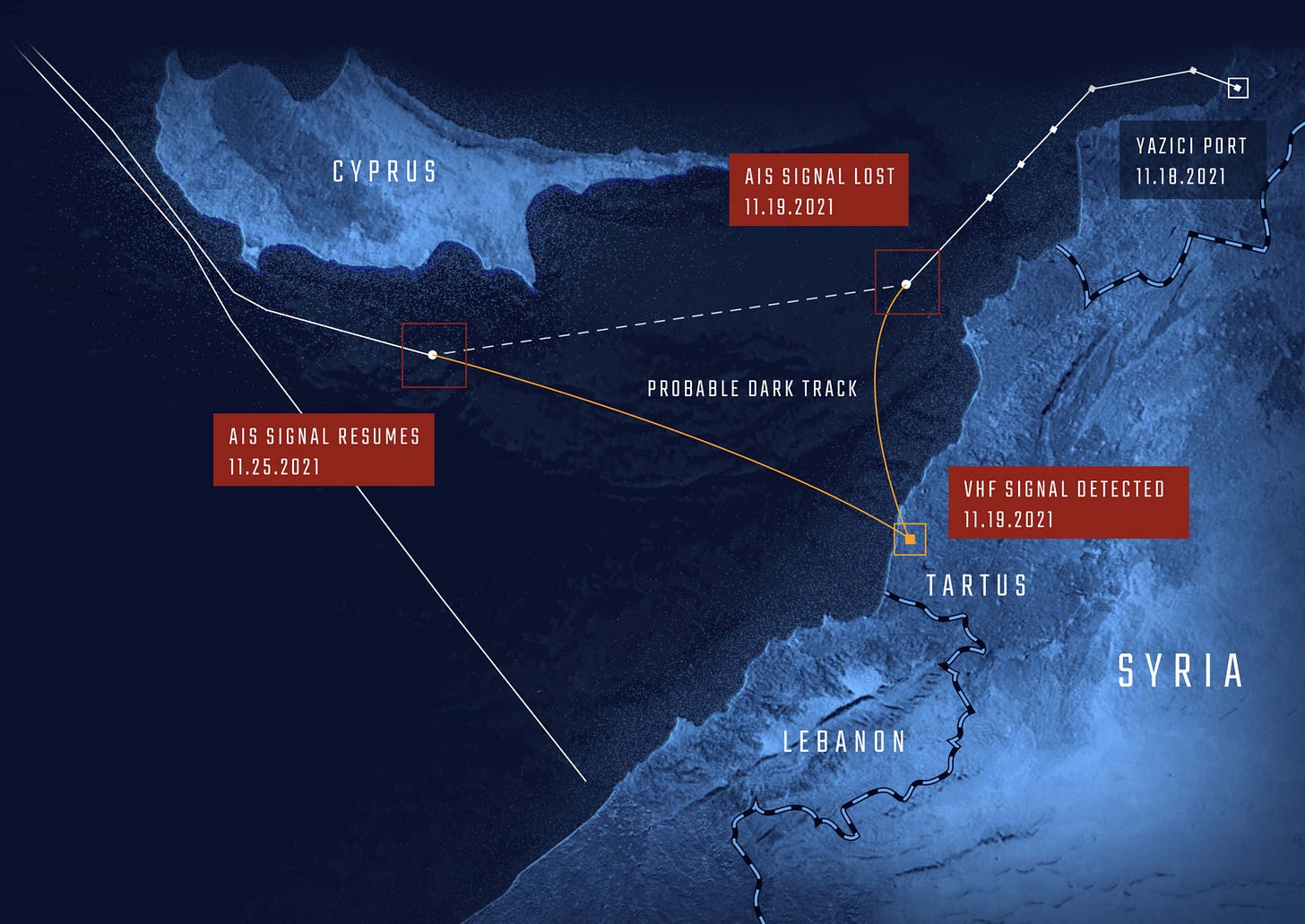Lockheed is now tracking phones and walkie-talkies from space, and the UAE military is allegedly a 'strong' customer
Space-based phone location-tracking firm HawkEye 360 announced its partnership with U.S. weapons manufacturer Lockheed Martin this morning. The UAE military is allegedly a "strong" customer.

This morning, space-based surveillance firm HawkEye 360 announced its “Strategic Cooperative Agreement” with weapons giant Lockheed Martin “on delivering sophisticated RF [radio-frequency] intelligence systems globally.” HawkEye’s current constellation of 21 satellites is trained to locate the sources of electromagnetic emissions with wavelengths ranging from roughly 2 meters down to 2 centimeters, with “Signals of Interest” including satellite phones, walkie-talkies, cellular towers, and GPS.
The announcement of HawkEye’s partnership with Lockheed came as part of a $10 million addition to HawkEye 360’s fourth major investment round — known as a “Series D” — with Lockheed Martin Ventures named as the primary additional investor, alongside unnamed “company insiders.” Despite not being a household name, HawkEye has long been considered one of the six most influential U.S. defense technology companies, as evidenced by serving as the ‘H’ in the popular defense tech acronym ‘SHARPE’, alongside data-fusion giant Palantir’s ‘P’.
In addition to former Texas Congressman Lamar Smith having formally lobbied for the company, former U.S. counterterrorism czar Richard Clarke has been a special assistant to HawkEye CEO John Serafini. And the company’s advisory board has been packed with three former members of Congress as well as former high-level military officials, including former National Security Agency Director Michael Rogers and John Abizaid, the former head of Central Command who subsequently became Donald Trump’s Ambassador to Saudi Arabia. President Biden’s departed National Cyber Director, Chris Inglis, was similarly an early member, and HawkEye’s board of directors previously included the former Chief Technologist of Google Federal, Rob Painter.
Despite months of requests, HawkEye 360 has not responded to inquiries on either its alleged “strong” role supporting the military of the United Arab Emirates, or on leaked details of its technological approach obtained by the author. HawkEye’s alleged contract with the UAE Armed Forces was uncovered as part of the author’s ongoing reporting on imagery and location-analytics company Orbital Insight’s surveillance contract with the Indonesian government, codenamed “Project Alpha.” As part of Orbital CEO Kevin O’Brien’s presentation to an investor group last month, he noted that the “Emerati ISR leads” were a “Strong HawkEye 360 customer.”

Beyond HawkEye’s alleged “strong” support for UAE military surveillance, perhaps the company’s largest public contract was a recently completed $5.8 million project with U.S. Naval Information Warfare Systems to monitor radio-frequency emissions in the Pacific. The company also received a 1.5 million euro contract in 2019 with the European Union’s border enforcement agency, Frontex, entitled “Satellite Radio Frequency Emitter Detection for Maritime Situational Awareness.”
HawkEye’s advisors have helped lead a large percentage of U.S. military and intelligence organizations — including the Central Intelligence Agency’s technical surveillance programs — and have included two former members of Congress who pivoted into lobbying, Norm Coleman and Lamar Smith. And so one can only conclude that HawkEye’s surveillance support for Gulf dictatorships is not an anomaly, but rather a corporate extension of official U.S. foreign policy.
Appendix
The full text of Hawkeye 360’s pitch to the Pentagon through the Vulcan contracting marketplace follows:
(U//PROPIN) HawkEye 360 (HE360) operates the first-of-its-kind constellation of commercial satellites that can independently detect, identify, and geolocate radio-frequency (RF) signals to within 500 meters of their point of origin. Launched in December 2018, the first cluster of three spacecraft (known as the Pathfinder Cluster) has been fully operational since February of 2019. The software-defined radio (SDR) payload on all three spacecraft can be tuned to a wide range of different frequencies (144MHz-15GHz) and switched between several different RF front end and antenna paths. The HE360 Signal of Interest (SOI) library is the list of signals that can be geolocated by the company’s spacecraft. Common SOIs include UHF GMRS/FRS Push-to-talk Radios, VHF Radios, Automatic Identification System (AIS) EPIRB Emergency Radio Beacons, Cellular Towers, Satellite Phone, X-band Maritime Navigation Radars, Ku-band VSAT Terminals. Tools developed in-house by HE360 efficiently process this data in an integrated signal-processing and geo-engine to calculate and deliver information about myriad emitter types from around the planet.
(U//PROPIN) Additionally, HawkEye 360 satellites can detect RF signals in the GPS bands, as well as other GNSS systems, e.g. GLONASS. If detected by all three spacecraft, the RF energy from a GNSS interference can be geolocated to its point of origin using an adaptation of the company’s existing geolocation techniques. Due to the global coverage of the constellation, geolocation of GNSS jamming or spoofing can be conducted over denied areas without exposing airborne or terrestrial sensors or personnel to hostile conditions. Unlike electro optical sensors, RF geolocation provides data day and night in all weather conditions.
(U//PROPIN) HE360 Spectrum Awareness products can support multiple applications and mission areas; including theater indications and warning, pattern of life analysis; maritime domain awareness; illegal fishing identification; border monitoring, mapping communications nodes; and disaster response.
(U) HE360 data and products are entirely unclassified, providing theater intelligence officers with an unprecedented ability to share RF geolocations with tactical echelons and partner nations. HE360 data is easily accessible via a web interface, and is interoperable “out of the box” with all GIS, C4ISR, and mobile device systems.



Hawkeye 360 uses 21 satellites, so who owns the satellites (and are they paid for by traffic), or, if Hawkeye 360 owns them, who launched them?